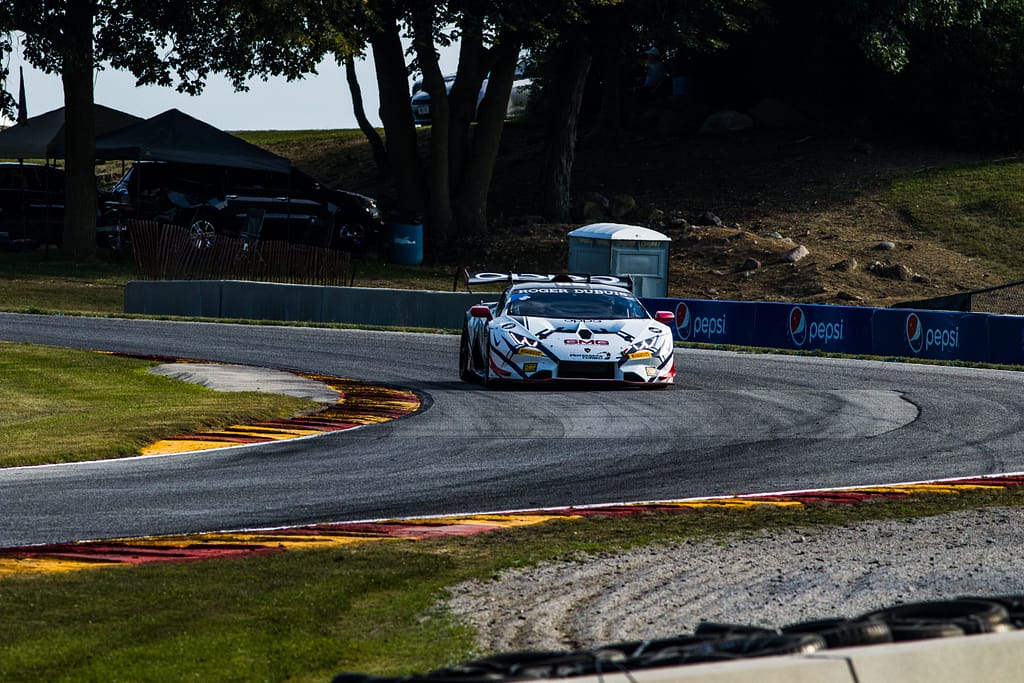
1. Access to events
First on the list of things a sports photographer can survive without, getting to events is the key part of photographing sports. Whether it be Formula One or high school football being at the event is the only way you are going to improve, or even get the shot. With this comes a whole host of things to consider. For me, that has always been going to locations and events that give me the opportunity to photograph something. This could be a race that is easy to get into and then photographing the crowd or something as simple as a high school football game that allows me right up to the side of the field.
2. Camera Body

The second set of kit in any photographer’s arsenal should be their camera body. Now, this is not to be mistaken for being above lenses in importance, but like the debate of chicken or the egg, one has to come first. For any photographer that has to be the body, because without a body you would be standing there holding an expensive lens with nothing to capture the images coming through its glass. I personally shoot with a Canon 80D
The ideal sports body will shoot at a decently high speed. Although you can produce high-quality images with most modern bodies. I also tell most late beginner to early intermediate shooters to change away from the default Canon Neck strap as it is quite uncomfortable and is far outclassed by other neck-straps. I recommend the peak design line.
3. A Telephoto or Zoom Lens
A sharp and light telephoto is a key component in any sports photographer’s kit. This comes in handy when you can’t be on the sideline or right in the action. For me, a 300 F/4L serves me well. However, if you choose to go full Frame then a larger lens might be more up your ally.
4. A Sharp Prime lens
For those moments when you can get up close and personal or for shooting details a prime lens like the 50mm f/1.4 can come in handy. The 1.8 aperture allows you to get those buttery backgrounds that we as photographers die for without having to get the compression of a large zoom.
5. A Sturdy Monopod
For shooting sports, a monopod can save you in the long run. Yes, you can hold a 300 just fine. However, given a long weekend like when shooting a sports car weekend, your arms can become quite tired over that time, and having a sturdy monopod gives you the support you need. And, it will allow you to shoot slower shutter speeds without having to worry about large amounts of camera shake. I use an IFootage Cobra 2
6. A Camera Bag or carrying system
This is the last of the big items, but I can’t repeat this enough, camera bags can be a lifesaver or a cumbersome mess. We want to try and not make it a cumbersome mess. That is why I recommend going for a backpack. Yes, it can be tempting to begin shooting with a half bag or shoulder slung pack, but in the long run, you will run out of space in these smaller packs. I currently shoot with one, however, on long weekends I often sacrifice pieces of gear to the size of the bag. Not to mention the fact that it leaves you no room for upgrading or the addition of a second camera in the future.
7. An SD Card
Ok, now to begin the smaller items. SD cards are a staple of debate amongst photographers. I will leave the brand debate out of this, but quality is key here. When we cheap out on slow cards it only makes a nightmare later. Let me paint a picture. I am shooting at Road America in Elkhart Lake, Wisconsin when the podium is beginning for the first race day of the Indycar Double-header. I have shot through all my fast cards and am forced to swap to a slow 48mb/s card. These cards have a buffer time of over 45 seconds when the buffer is filled. This means that you are forced to wait 45 seconds before you can begin shooting again. When shooting important moments like a podium that only happens once you don’t have time to waste and this issue can mean missing the shot of a lifetime. That is why following that race I purchased several more fast cards at over 150 mb/s. These cards allow the buffer to clear in mere seconds and put an end to the unfortunate waiting.
8. Editing Software
Editing software is another topic open for debate. So, I will once again keep it short. Editing software should serve your purpose. If it works for you and fits into your budget and workflow then that is what you should use
9. Storage Solution
Last of the solid items, or not! With large amounts of data being stored on Sd cards, we as photographers need a place to store all of this data. This brings us to a crossroads. Cloud vs HD. This decision is like buying a car or picking tools once you go down one path it can be a struggle to go back. Each of these has advantages and disadvantages. The task is picking the one that suits your needs.
10. The right attitude
Last on the list is a big one. Having a good attitude is key to photographing sports. In my opinion, you have to enjoy the sport you are shooting to properly convey the emotion and feelings of the event. We know that when we walk into the arena, track, pitch, etc. Whatever comes our way we will capture the image. Whether it be rain, snow, or extreme heat that is the goal. I find that rain is a blessing in disguise. Yes, on one hand, if you are unprepared it can ruin gear and leave you wet and cold. On the other hand, if prepared it can yield some amazing images.
Overall photography is an art and a skill. It requires dedication and determination. But when you have begun to feel in your element the world will feel your images just like they were there.

